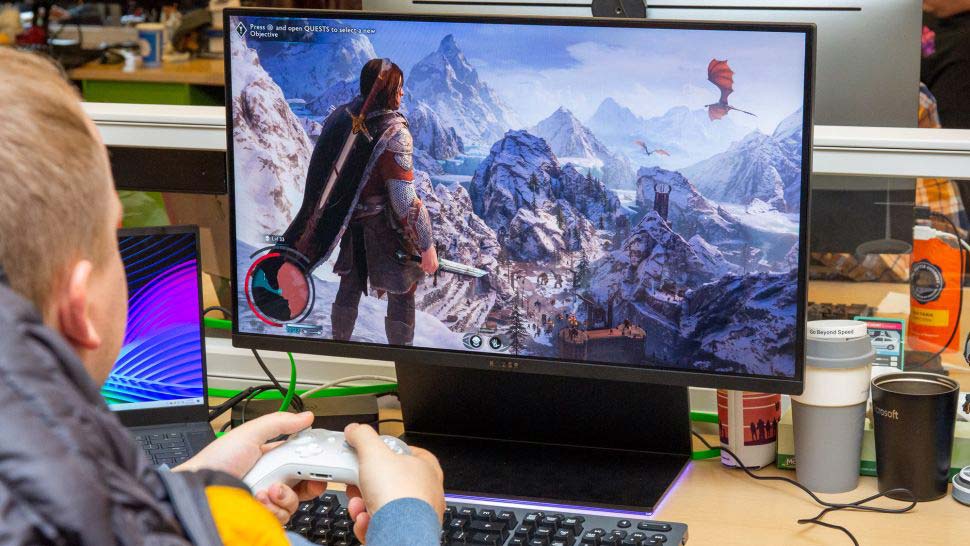
The freestanding monitor has to be one of the most overlooked peripherals when it comes to creating or upgrading your setup. It's a shame that instead of ensuring time will be spent with a monitor that gives the best experience, some spend more effort ensuring their tower is lit up like Willy Wonka's tunnel ride.
The best monitors can improve your experience dramatically, giving you (amongst other things) more screen space for productivity; better refresh rates for more responsive gaming; or sharper and brighter images for entertainment and content creation. It doesn't matter if you have a little to spend or a lot, there's something for everyone within such a diverse market.
So much, in fact, that with everything to consider, it can become a bit overwhelming, which is likely why so many people overlook the importance of a good monitor. To help, we at Laptop have compiled a list of the best monitors available, along with a guide on what specifications are important to look for when making your final decision.
If you want a monitor that will get the most out of your game library, why not check out the best gaming monitors. Or if you're looking to get the most bang-for-your-buck when it comes to a new monitor, there's also our best cheap monitors. Alternatively, if you're looking for a monitor with a little more immersion and flair to it we have you covered too with our best curved monitors. And we've also got you covered if you"re unsure whether you want dual monitors vs. ultrawide monitors.
Whether you have an eye for content creation, gaming, productivity, or a bit of everything, our selection of the best monitors has something interesting to see.
We have a new slew of monitor reviews coming so updates are on the way. Will our current crop remain intact, or will there be changes? We'll find out soon.
What are the best monitors?
If you’re wanting a monitor that can perform in all areas, the Razor Raptor 27 is a fantastic option and is capable of being more than just a gaming monitor. Thanks to its bright and vivid screen, the Raptor could just as easily be used for content creation, and its 1440p resolution offers more on-screen real estate to help with productivity.
Should you be looking for something a little less expensive, the Acer KG251Q bmiix monitor is a cheap no-frills all-rounder that will see you right for a fair price. For gaming, the Dell S2721HGF is a great entry-level gaming monitor with speedy refresh rates and low response times to help deliver a smooth experience on a smaller budget.
On the other end of the spectrum, if you don’t mind making an investment and your primary focus leans toward content creation and productivity, take a closer look at the HP S430c 43.4-inch curved ultrawide monitor. With so much real estate available to you, it’s probably legal to begin calling yourself a Lord as the days of micromanaging your windows and apps will well and truly be over.
The best monitors
- Dell S2721HGF
- MSI Optix MAG274QRF-QD
- Monoprice Dark Matter 49-inch curved gaming monitor
- HP S430c 43.4-inch curved ultrawide monitor
- Asus ROG Strix XG27UQ monitor
- ViewSonic Elite XG270
- Acer KG251Q bmiix monitor
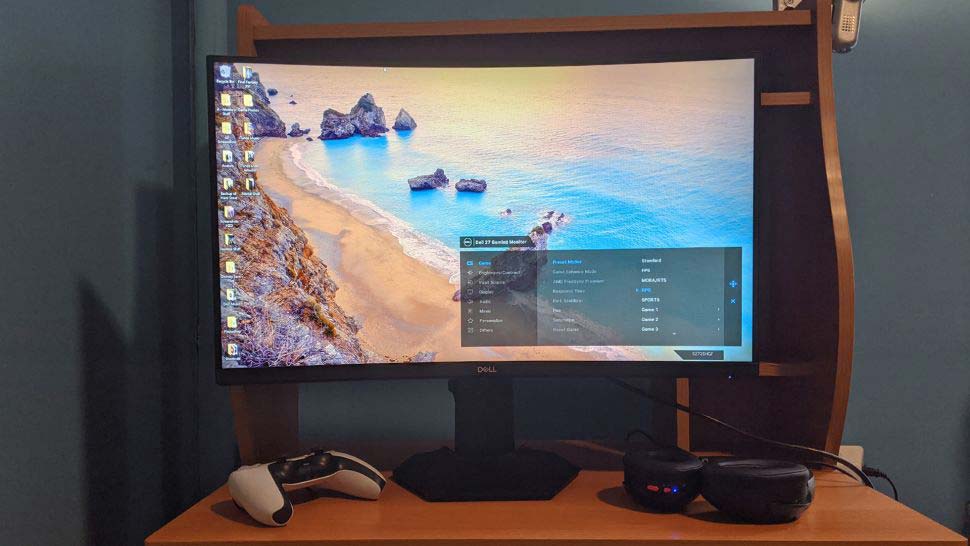
Sure, it may have a name that seems more befitting of a First Order stormtrooper, however, what the Dell S2721HGF lacks in a punchy name it makes up for in being an absolutely fantastic value for the money.
For $224.99, you’ll have your hands on a fantastic entry-level gaming monitor. The S2721HGF might not be as bright as some of the more midrange or premium gaming monitors out there, but it does manage to have a colourful and responsive display thanks to its VA panel, 144 Hz refresh rate and 1ms response time. Should you be hooking up to an AMD system, you’ll never have to worry about stuttering or screen tearing thanks to FreeSync support.
There’s a reason this affordable monitor charts in our best gaming laptops list. If you’re looking to pick up a gaming monitor for the first time, or without breaking the bank, there’s no better investment right now than the Dell S2721HGF.
See our full Dell S2721HGF monitor review
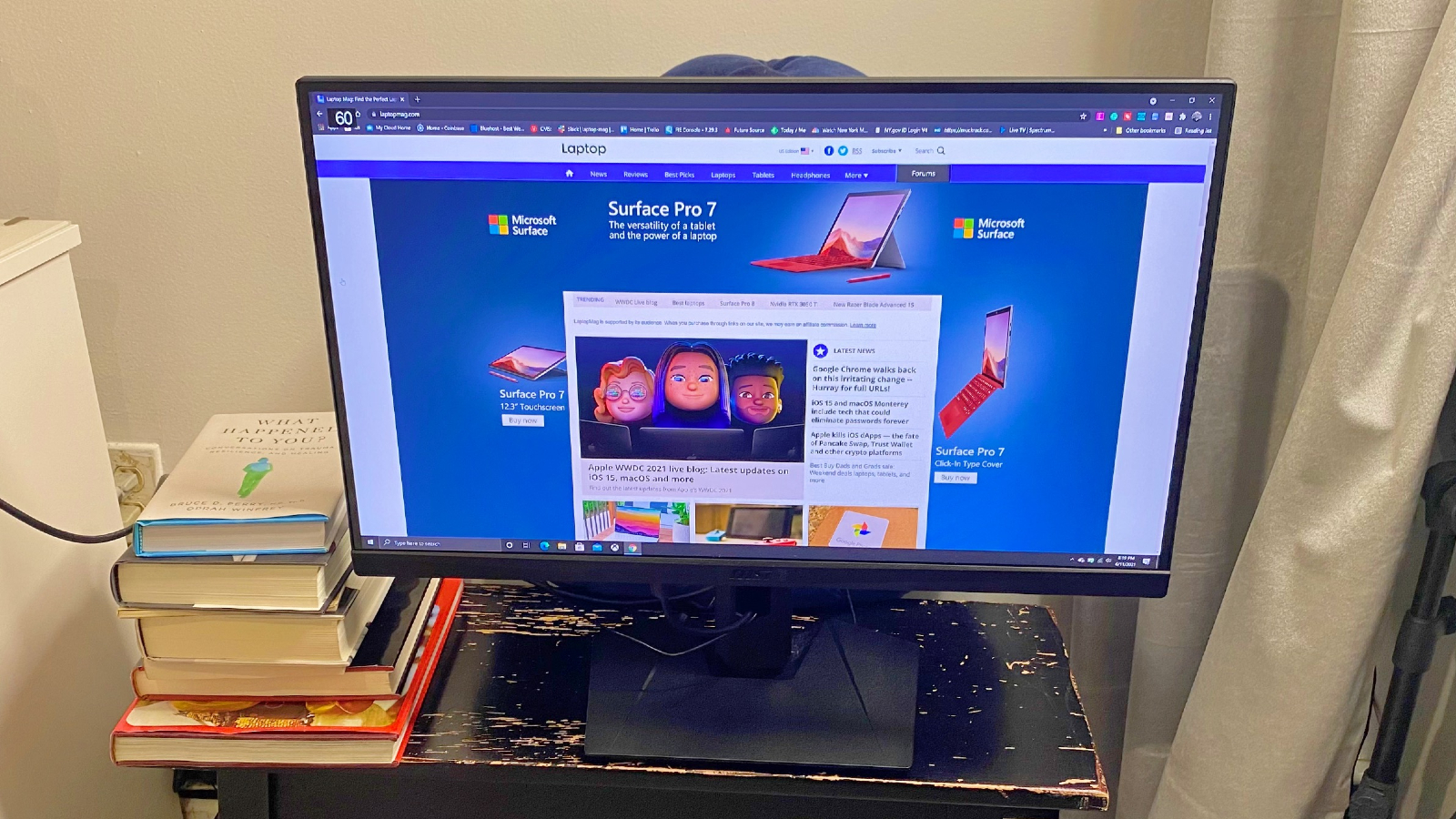
The MSI Optix MAG274QRF-QD is fast, colorful, stylish, and not too hard on your wallet, making it an excellent all-around gaming monitor that supports both AMDFreeSync and Nvidia G-Sync. The all-black nearly bezel-less 27-inch monitor is ergonomically friendly, highly adjustable, easy on the eyes, and built for speed with 1ms response times and a 165Hz refresh rate to ensure buttery smooth motion and image quality. And at $369, it doesn’t break the bank.
The MSI Optix MAG274QRF-QD 27-inch monitor is an excellent choice for all your gaming needs. It comes with a crystal-clear 2560 x 1440-pixel IPS panel that features a 165Hz refresh rate, native FreeSync support, and is G-Sync compatible The response time results in a smooth, tear-free-motion, and it has low input lag for when you’re playing fast-paced first-person shooters. Best of all, you get all of these features for only $369! With a slew of features and ports, the MSI Optix MAG274QRF-QD is an excellent choice for your gaming needs.
See our full MSI Optix MAG274QRF-QD review.
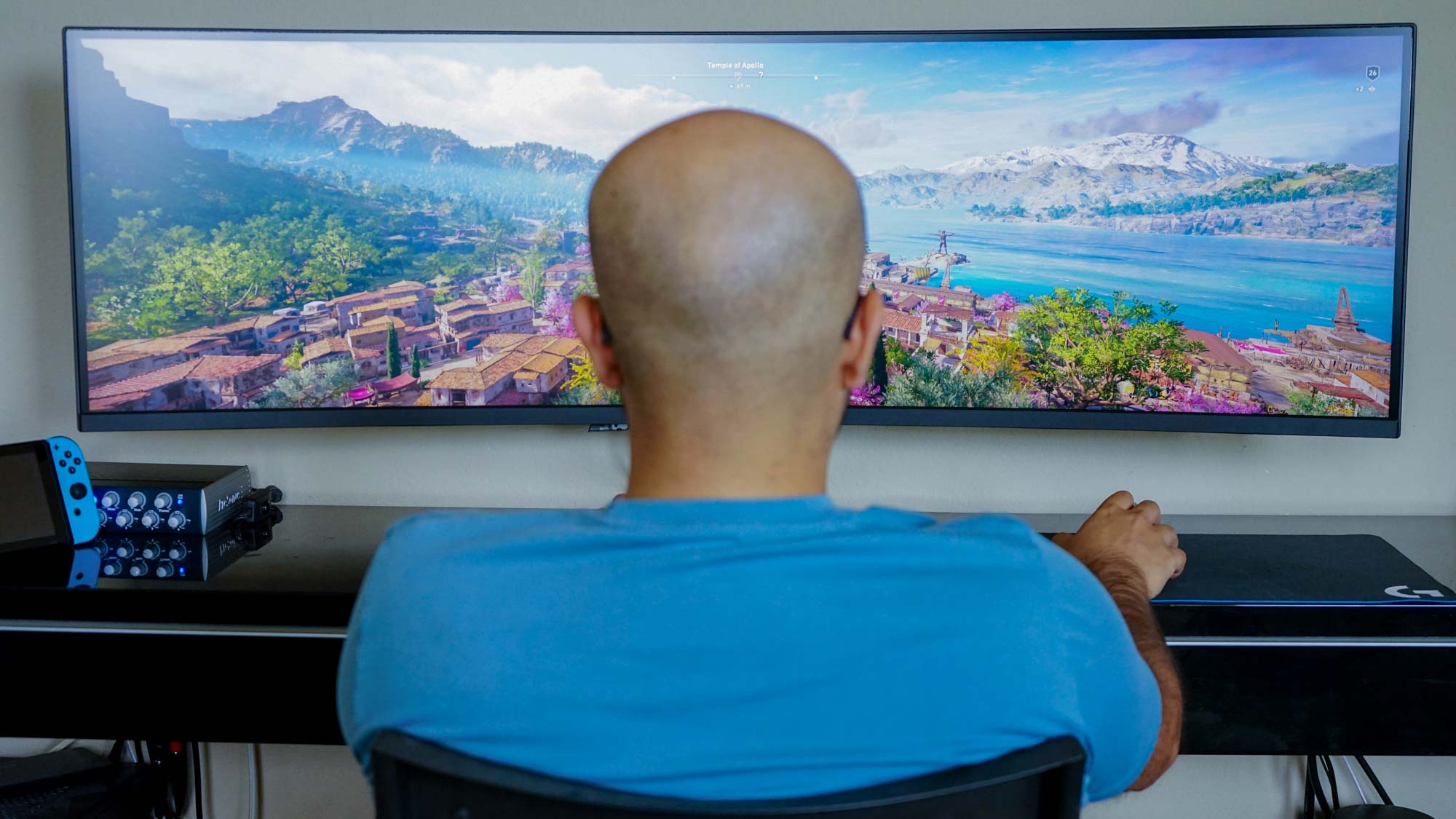
Much like Monoprice, I hate the horizontal scroll bar. Though I don’t know if I’d go so far as slamming two 27-inch monitors together to never see one again. Monoprice’s Dark Matter is a 49-inch curved monitor that will catch the attention of anyone with at least one working eye.
It’s the Dark Matter’s $900 price that is then going to lure people in further as it's less expensive than its contemporaries in the monitors-as-window-replacements DQHD (Dual Quad HD) market. A drop that makes taking the plunge into the ultrawide monitor ownership club a little more appealing, but it comes at the cost of a few corners being cut.
One of those being that the Dark Matter only has an 8-bit colour depth; it’s not exactly the worst thing in the world, but throwing down $900 on a monitor that may quickly seem dated as newer technologies take over may feel like a poor investment in the long run.
On the other hand, the Dark Matter makes use of that 8-bit performance solidly. Impressive contrasts with deep blacks and strong colours were a welcome surprise in our testing, and while there is ghosting at times, it didn’t hamper our gaming enjoyment. Especially when it came to seeing the Dark Matter in action with its contrasts and colours paired with an impressive field of view.
See our full Monoprice Dark Matter 49-inch Curved Gaming Monitor review
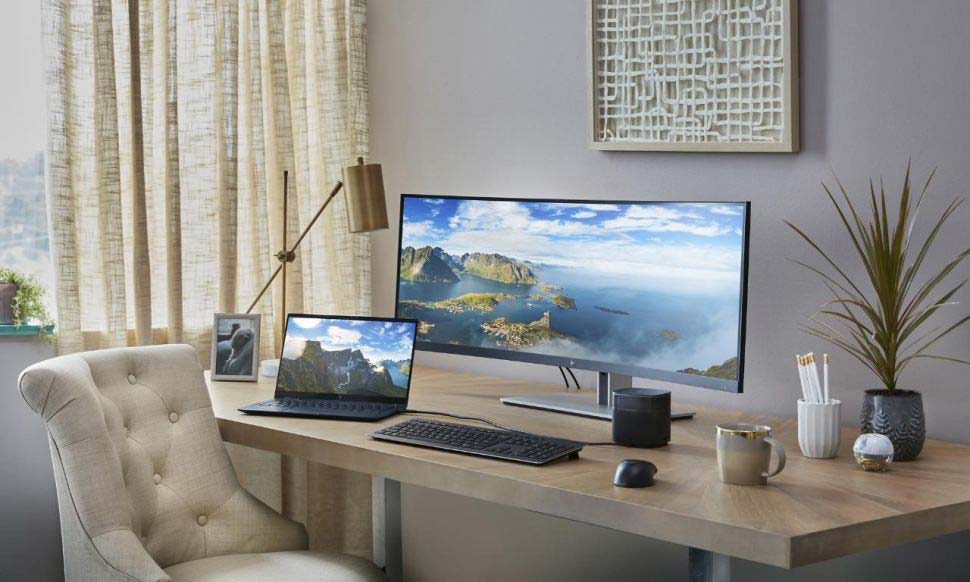
In our pick of the best curved monitors, the HP S430c came out on top as the best all-round curved monitor you can buy today. This 43.4-inch, 4K ultrawide monitor showcases HP’s solution to the dual monitor setup. That solution? Don’t bother.
The S430c recreates the multi-monitor setup within a single DQHD screen and then improves upon that solution with a range of features to streamline the experience entirely. Not only can you partition your screen into various configurations that allow you to simulate multiple monitors simultaneously, but you can also connect a second device to the monitor and have both computers running on-screen at the same time. The S430c will even use a single keyboard and cursor to control both without hassle, and due to some handy proprietary software, you can drag-and-drop files from one screen to another to seamlessly transfer them between systems.
The HP S430c is the Mecca of the multi-tasker, cram-packed with ways to improve your productivity all within one screen. We were also impressed with the bright and vivid results when playing media. You could even (at a push) take advantage of the 60 Hz refresh rate and 1ms response time to engage in some entry-level gaming if you so wished. HP’s S430c feels truly innovative in these ways, a little something for everyone housed inside one single screen. However, while innovation is impressive, it’s also not cheap, with the price of the monitor at $999. Though, if you’re a professional or content creator, and you’re looking for a way to simplify your workstation or ways to boost your productivity, what the HP S430c offers might be even more valuable.
See our full HP S430c 43.4-inch Curved Ultrawide Monitor review

This is entry-level? With a beautiful 4K panel focused on color accuracy, a very user-friendly amount of adjustability and an ergonomically pleasing design, the fact that the Dell UltraSharp 27 4K USB-C Monitor (U2720Q) only costs $539 is shocking. Targeting creative professionals and people that place a high value on productivity, the monitor has a healthy amount of ports, which create a productivity-enhancing atmosphere for those working with high-end color graphics, photos and video.
The U2720Q is a VESA DisplayHDR 400 certified panel which Dell claims is factory calibrated at 99% sRGB to an accuracy of Delta-E < 2 for accurate colors right from the start. The wonderful mad scientists in our lab ran it through its paces and the Dell Ultrasharp scored a brightness average of 308.8 nits outscoring its competitors the Razer Raptor 27 (296 nits) and the Samsung Space Monitor SR 75(264.4 nits). The Razor Raptor 27 scored an excellent 162.1% of the sRGB color gamut and scored a DCI-P3 of 105.2%, and a Delta-E average of 0.24%, which are excellent results.
The UltraSharp comes with a healthy amount of ports. On the right of the panel, there is a USB 3.0 Type-A port and a USB Type-C port. The latter is capable of power delivery to your laptop or other devices. Towards the bottom of the monitor, you get another USB Type-C port and a pair of USB 3.0 Type-A ports, an HDMI 2.0 port, DisplayPort 1.4, a 3.5mm audio jack, a secure lock slot and an AC power port.
The color-accurate Dell Ultrasharp 27 4K U2720Q is a business workflow beast. The monitor offers many connection options with its wide array of ports. It even has the ability to charge your laptops and devices as you move around the office. Its accurate color reproduction is a thing of beauty and makes the monitor a great option for any office, small business, or content creators seeking a leg up. It’s not a high-end gaming monitor but you will get some solid gaming results with it, and it renders beautiful sharp images and video.
See our full Dell Ultrasharp 27 4K U2720Q review
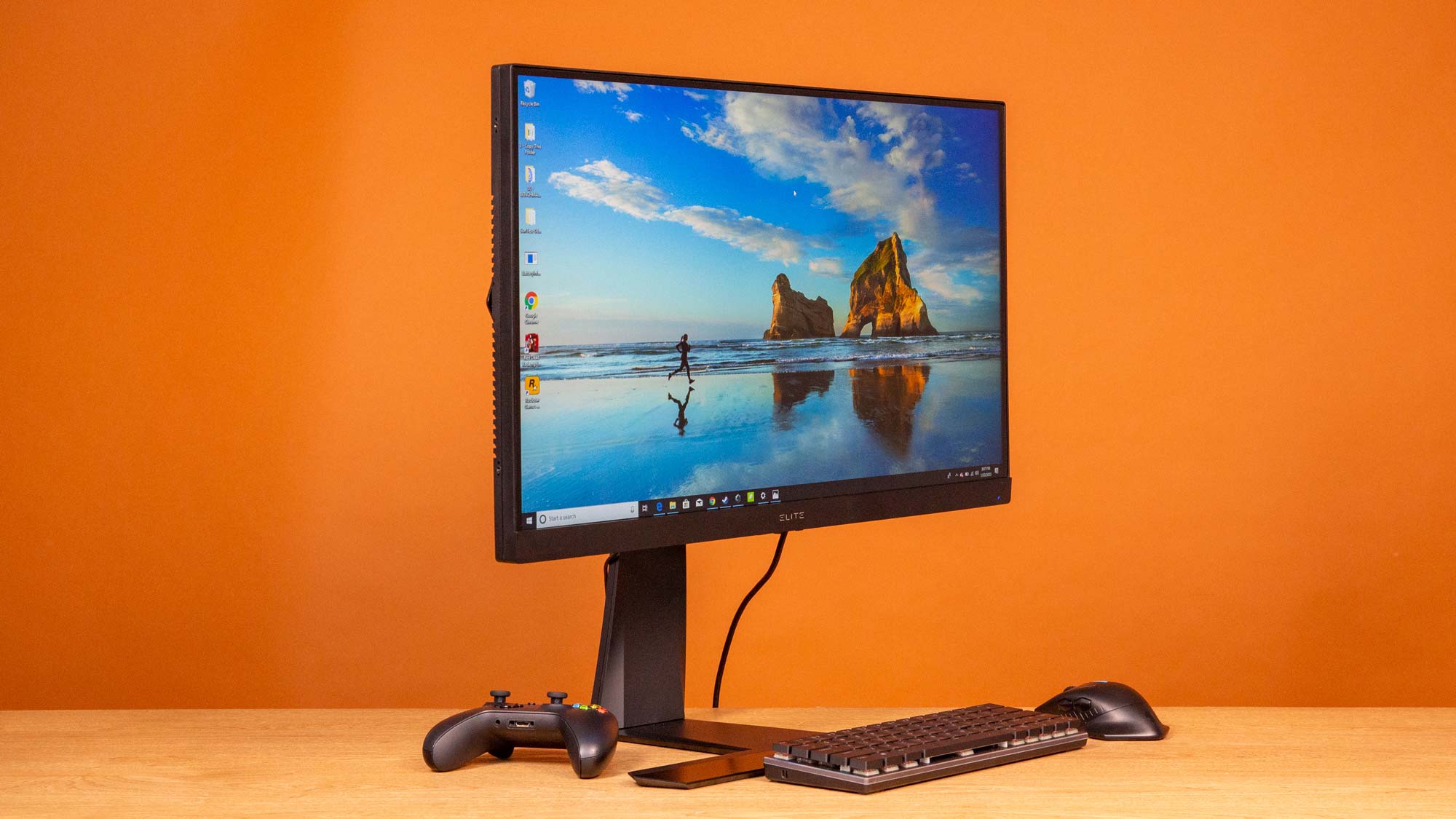
The ViewSonic Elite XG270’s massive 240Hz refresh rate makes it a must-have for those interested in squeezing out every possible advantage they can in the field of eSports. With FreeSync and G-Sync support eliminating artefacts and screen tearing, you’ll be receiving fast and accurate frame delivery that you can capitalize on as you work towards your victories.
Yes, with the privacy panels in place, it does look like your monitor is wearing horse blinkers, but as it makes clear with its impractical base, the Elite XG270 is all about internal function over external form. Its blistering refresh rate and 1ms response time are paired well with the Adaptive Sync features made available from AMD and Nvidia. The monitor also sports a host of presets for various game and non-game modes to help you further tweak performance. The ViewSonic Elite XG270’s 27-inch, 1920 x 1080 display is bright and has impressive colour accuracy, improved further by the IPS panel’s HDR10 support.
If you’re looking to fine-tune your skills as a competitive gamer, you’re going to need a monitor responsive enough to give you room to improve. For $429, the ViewSonic Elite XG270 delivers exactly that.
See our full ViewSonic Elite XG270 review
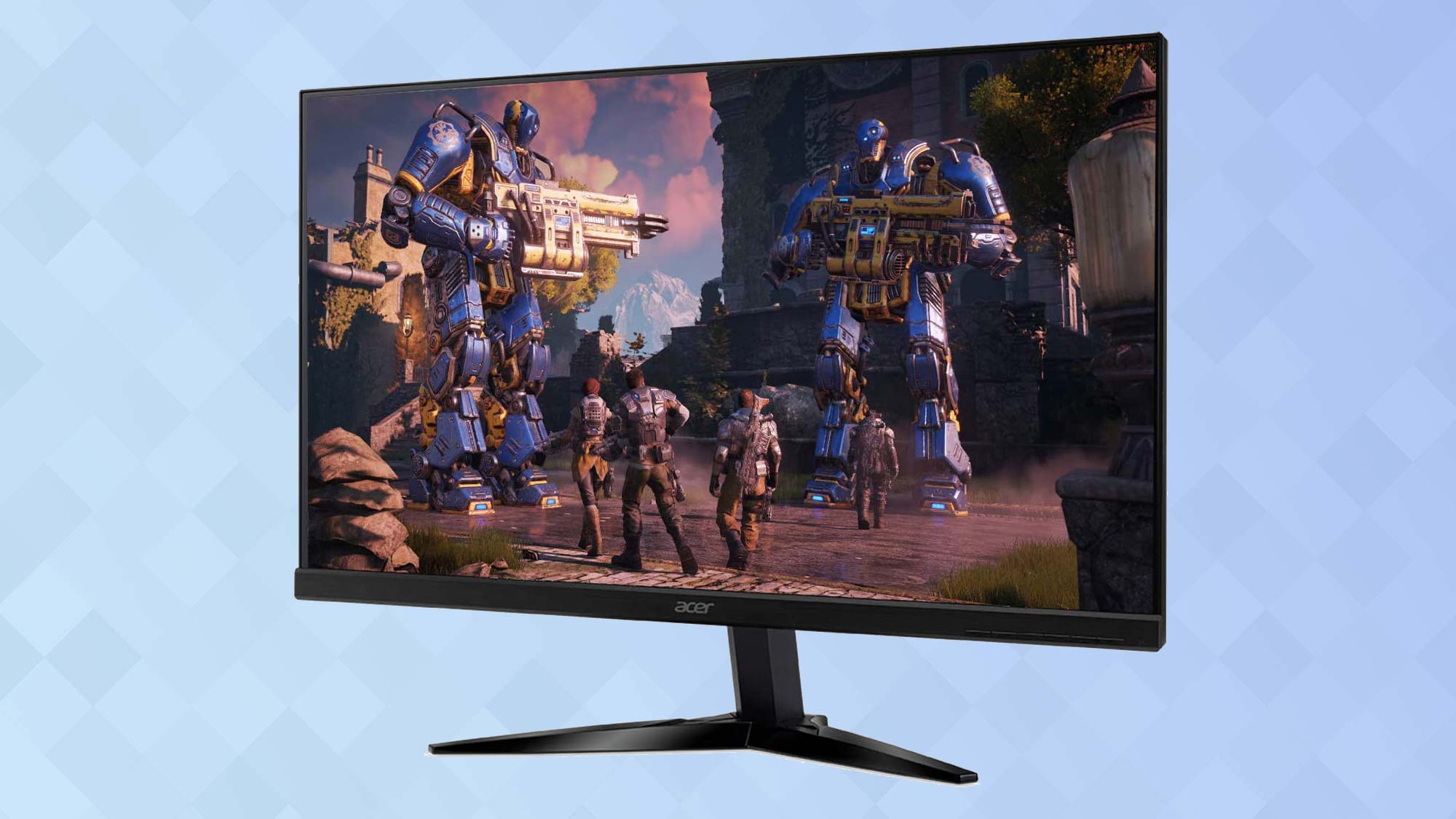
As recognised in our best cheap monitors list, if you’re looking for an entry-level all-rounder then the Acer KG251Q bmiix is the king of budget buys. The zero frame design puts all 24.5 inches of the 1080p display centre stage, a display that users have complimented for its colour accuracy and brightness.
The Acer KG251Q bmiix has a refresh rate of 75Hz and a response time of 1ms. This isn’t a monitor with high-end gaming in mind, but if you’re expecting to run games at a sub-60 FPS level, you should be fine. A bonus for AMD users is the FreeSync support that will clear up any screen tearing you may encounter.
With a price tag of around $149.99, the KG251Q bmiix is a bargain for anyone looking to pick up a laptop that can do a little bit of everything. If you have a system that isn’t going to push the boundaries any time soon, this monitor will do just about everything you need it to.
How to choose the best monitor for you?
There’s no point in paying through the nose for something you don’t need, and for that reason, it’s fairly important to identify what it is you do need from a monitor before buying. Determining your monitor’s key purpose will help you best understand which specifications you’ll need to focus on. The best monitor for you can depend on whether you plan on gaming, content creation, or general all-around usage.
There’s a lot of technical jargon that comes with shopping for any technology, and monitors are no different. Outside of display size and ports, there are many other factors on hand, like refresh rates, response times, and panel type, to name a few.
If those things mean about as much to you as the weird hardcoded alien subtitles in pirated DVDs, then worry not. You don’t need a computer science degree to get the basics of things down. The following is an abridged rundown of things to look out for in a monitor.
Display Size and Resolution are fairly self-explanatory to a certain degree, referring to the diagonal measurement of the screen and the number of pixels that can exist within that space, respectively. The size of the display will determine which resolution you should be looking for if you want the sharpest image. Displays between 21 and 24-inches are the sweet spot for 1080p, a 27-inch would benefit more from a 1440p resolution, with anything higher looking its best in 4K. It’s worth pointing out that 4K resolutions will give sharper images but lower response times, so if your focus is gaming, a 1080p or 1440p resolution may suit you better.
A monitor’s Refresh Rate is the rate at which the screen will update the image displayed each second, represented in hertz (Hz). For example, a monitor with a refresh rate of 60Hz will refresh the image on screen 60 times per second. This is typically only important for gaming as most apps and other forms of entertainment usually won’t require anything more than 60Hz. You’ll want to look for a refresh rate that’s slightly higher than your GPU’s FPS output to ensure you’re capturing every frame you can.
The Response Time of a monitor is the time in milliseconds (ms) it takes for a single pixel to change from one colour to another. As a loose rule, the higher your refresh rate is, the lower you want your response time to be. This is to avoid the monitor’s refresh rate updating the image before certain pixels have finished responding, which can result in motion blur or ghosting. For general use, you won’t notice much difference with anything lower than 10ms. However, if you have gaming in mind, you’re going to want to look for a response time lower than 5ms and as close to 1ms as your budget can allow.
Finally, another key factor in your decision will be the monitor’s Panel. The three most popular panel types are Twisted Nematic (TN); In-Plane Switching (IPS); and Vertical Alignment (VA). TN panels usually have faster response times, meaning they’re best suited for gaming; they're also generally cheaper with the payoff being weaker colour accuracy. If you’re looking to create content, the more expensive IPS panel will give you the best colour accuracy and viewing angles. VA panels are great for general purpose, offering good contrast, colour and refresh rates, but typically having the longest response times.
Less common panels include OLED, a more pricey alternative with fantastic contrast, image quality, response times, and decent 120Hz refresh rates; and QLED, a more affordable option than OLED that’s brighter with better colours than most traditional panels while offering good refresh rates and response times.







